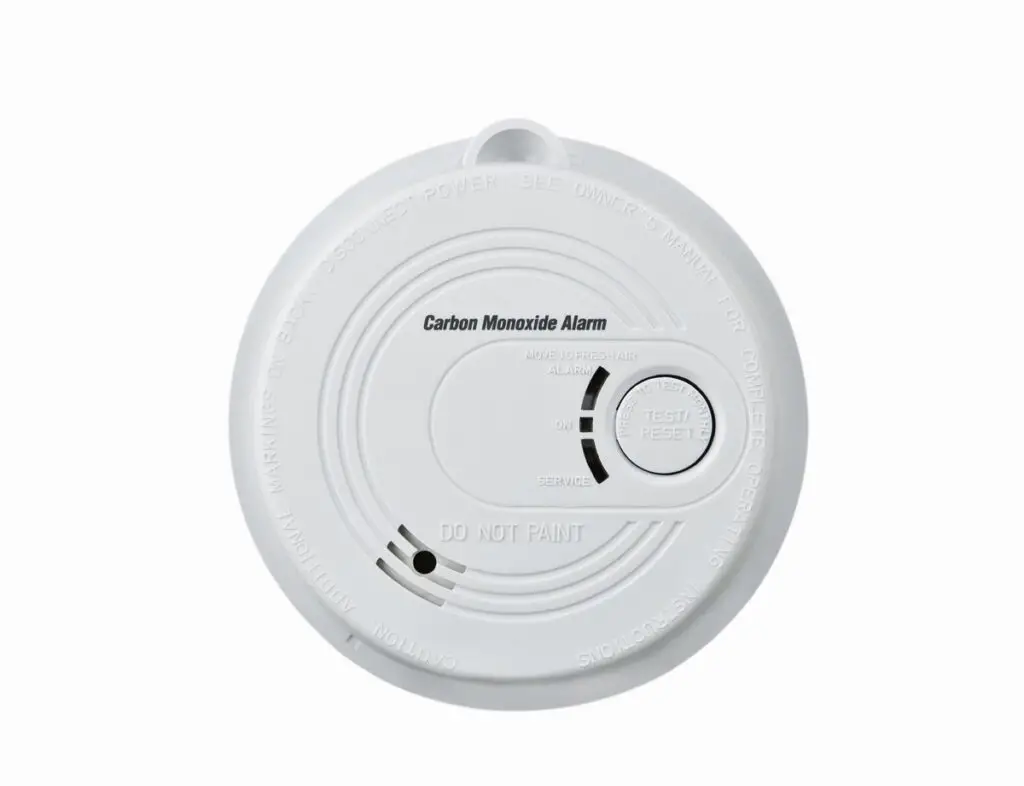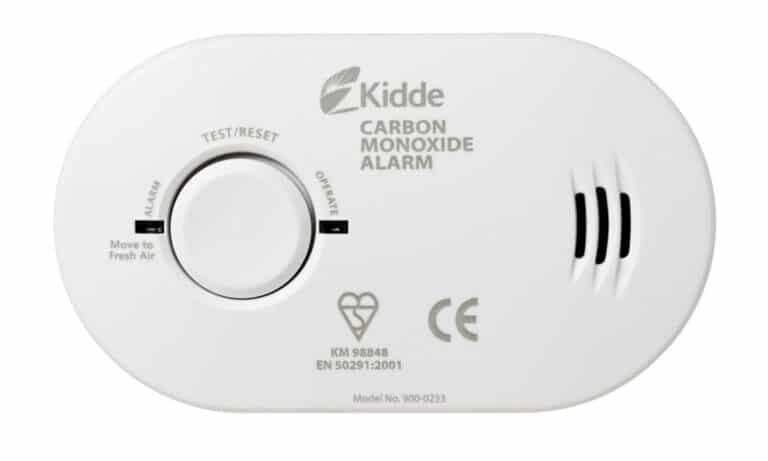Introduction
How to Remove Battery From Carbon Monoxide Detector: Carbon monoxide detectors protect us from poisoning. These detectors notify us to excessive carbon monoxide levels so we can act quickly and avoid harm. However, we may need to remove a carbon monoxide detector’s battery for maintenance or replacement.
There are several reasons why you might need to remove the battery from your carbon monoxide detector. Replacement of the battery is a common explanation. Over time, your detector battery will die and need to be replaced. Device maintenance is another reason. You may need to remove the battery to clean the detector or check for loose connections. Removing the battery temporarily disables the detector’s carbon monoxide detection, so do it carefully.
Carbon monoxide batteries typically last one to five years. Please note that this is a basic guideline and battery lifespans can vary based on the above criteria. Check the carbon monoxide detector’s user handbook or manufacturer’s recommendations for battery lifespan and replacement.

How do I stop my carbon monoxide detector from beeping?
Carbon monoxide detectors are essential safety devices that alert you to the presence of this deadly gas in your home. However, it can be quite frustrating when your carbon monoxide detector starts beeping for no apparent reason. The constant beeping can disrupt your sleep, cause anxiety, and even lead to confusion. Fortunately, there are several steps you can take to stop your carbon monoxide detector from beeping.
1. Check the batteries: The most common reason for a carbon monoxide detector to beep is low or faulty batteries. Start by checking the batteries and replacing them if necessary. It is recommended to use high-quality batteries and change them at least once a year.
2. Test the detector: If the beeping continues after replacing the batteries, it is important to test the detector. Follow the manufacturer’s instructions to perform a test. If the detector fails the test, it may be malfunctioning and should be replaced.
3. Clean the detector: Dust and debris can accumulate inside the detector, causing false alarms. Use a soft brush or vacuum cleaner to gently clean the vents and sensors. Be careful not to damage any components while cleaning.
4. Check for other sources of carbon monoxide: If your carbon monoxide detector is still beeping, it is possible that there is another source of carbon monoxide in your home. Check all fuel-burning appliances, such as furnaces, water heaters, and stoves, for any signs of malfunction or leaks. It is recommended to have these appliances inspected regularly by a professional.
5. Contact a professional: If you have tried all the above steps and your carbon monoxide detector is still beeping, it is best to contact a professional. They can inspect your home for any potential carbon monoxide leaks and ensure that your detector is functioning properly.
How do you turn off a low battery carbon monoxide detector?
A low battery carbon monoxide detector can be turned off in a few easy steps. Carbon monoxide detectors are vital for preventing CO poisoning. These devices detect this odorless, colorless gas, which can kill if not discovered early. However, like any other electronic device, carbon monoxide detectors also require regular maintenance, including changing the batteries when they run low.
Step 1: Locate the carbon monoxide detector in your home. CO rises and is usually placed on the ceiling or wall. Power the detector using batteries or electricity.
Step 2: Identify the type of battery used in your carbon monoxide detector. Most detectors use either AA or 9-volt batteries. This information can usually be found on the back of the detector or in the user manual.
Step 3: Once you have identified the type of battery, you will need to remove the old battery. Some detectors’ battery compartments open simply sliding or pressing a latch, whereas others require a screwdriver (panel removal).
Do you need to replace batteries in carbon monoxide detector?
CO detectors inform you when levels are too high in your house, giving you time to flee and get help. However, these detectors require batteries, so they must always be working.
Changing CO detector batteries annually is advisable.
To work, CO detector batteries must be updated often. Batteries might die or corrode, impeding detection. Unreplaced batteries may cause false alarms or miss high carbon monoxide levels in your home.
To guarantee proper operation, verify your carbon monoxide detector regularly. To achieve this, push the detector’s test button, which should sound an alarm. The warning may not sound if the batteries need replacing or the detector is malfunctioning.
How long do carbon monoxide batteries last?
Carbon monoxide detectors need batteries. These batteries keep the detector running. CO batteries, like others, need to be replaced.
Carbon monoxide battery longevity depends on several factors. Battery quality is a major element in CO battery lifespan. Good batteries last longer and power the detector more reliably. However, lower-quality batteries may last less and need to be replaced more often.
Power requirements for the detector might also effect carbon monoxide battery lifespan. Carbon monoxide detectors usually use little electricity, however this varies by model and features. If a detector needs more power, the battery may last less and need to be replaced more often.
Environmental factors can affect carbon monoxide battery lifespan in addition to battery quality and detector power. Extreme heat or cold can affect a battery’s lifespan. Moisture and humidity also shorten battery life.
What happens when carbon monoxide alarm runs out of battery?
Incomplete combustion of fossil fuels including gas, oil, and coal produces colorless, odorless carbon monoxide (CO). High amounts of it are poisonous and lethal. Carbon monoxide alarms warn residents of harmful gas.
People may accidentally be exposed to excessive carbon monoxide levels.
Safely removing CO detector batteries takes a few steps.
Clean the battery compartment after removing it. Remove dust and debris with a dry cloth or cotton swab. It will help ensure correct battery contact when installed.
Are there any specific precautions to take when removing the battery from a carbon monoxide detector?
Remove the batteries from a carbon monoxide detector carefully to ensure safety and proper operation. Cut the detector’s power before removing the battery. Pressing a power button or switching the gadget usually does this.
Wear gloves to avoid contact with dangerous chemicals on the battery or detector. To avoid inhaling battery removal vapors, work in a well-ventilated location.
Additionally, follow your carbon monoxide detector’s manufacturer’s directions. Some detectors require special battery removal procedures. Following these procedures will securely remove the battery without damaging the detector or affecting its operation.
Can you provide a detailed guide on how to properly remove the battery from a carbon monoxide detector?
Carbon monoxide detector batteries may be removed safely in a few steps. Here is a detailed guide on how to properly remove the battery from a carbon monoxide detector:
Step 1: Before starting the process, it is important to ensure your safety by wearing protective gloves and turning off the power to the detector. This can usually be done by flipping the switch on the side or back of the device.
Step 2: Locate the battery compartment on the carbon monoxide detector. This is typically found on the back or bottom of the device. Look for a small latch or release button that will allow you to open the compartment.
Step 3: Once the compartment is open, carefully remove the battery by gently pulling it out. Be cautious not to damage any wires or connections inside the compartment.
Step 4: Dispose of the old battery properly according to local regulations. It is important to recycle batteries to prevent environmental harm.
Step 5: If replacing the battery, align the positive and negative terminals before inserting it. Seal the compartment.
Step 6: Finally, turn the power back on to the carbon monoxide detector and test it to ensure it is functioning properly. This can usually be done by pressing the test button on the device.
By following these steps, you can safely and properly remove the battery from a carbon monoxide detector. Remember to always prioritize your safety and follow any specific instructions provided by the manufacturer.
Are there any tools or equipment required to remove the battery from a carbon monoxide detector?
When it comes to removing the battery from a carbon monoxide detector, there are typically no specific tools or equipment required. Most carbon monoxide detectors are designed to have a simple battery compartment that can be accessed easily. In most cases, all you need is your hands to safely remove the battery.
However, it is important to note that some carbon monoxide detectors may have a screw or latch that secures the battery compartment. In such cases, you may need a small screwdriver or a similar tool to open the compartment. Check your carbon monoxide detector’s manual or manufacturer’s instructions for tools.
Is there a suggested battery brand for carbon monoxide detectors?
When it comes to choosing a battery for your carbon monoxide detector, it is important to select the right type and brand to ensure optimal performance and safety. There are certain broad requirements for carbon monoxide detectors, however there is no single brand or type.
Firstly, it is crucial to check the manufacturer’s instructions or user manual for your specific carbon monoxide detector model. This will provide you with the most accurate and up-to-date information regarding the recommended battery type and brand. Following the manufacturer’s guidelines will help ensure that your detector functions properly and provides accurate readings.
Second, high-quality, long-lasting batteries from respected companies are advised. These batteries usually deliver steady power and last longer, lowering the danger of your carbon monoxide detector losing power. Batteries labeled for smoke and carbon monoxide detectors are intended to suit their power needs.

Conclusion
Removing the battery from a carbon monoxide detector is a simple process that can be done by following a few steps. First, it is important to ensure the safety of yourself and others by turning off any gas appliances and opening windows for ventilation. Then, locate the detector and carefully remove the cover or faceplate. Next, locate the battery compartment and gently remove the battery. Finally, dispose of the battery properly and replace the cover or faceplate. By following these steps, you can safely remove the battery from a carbon monoxide detector.
It is crucial to remember that carbon monoxide detectors are essential for detecting this odorless and colorless gas, which can be extremely dangerous if not detected early. Therefore, it is important to have a working carbon monoxide detector in your home at all times. However, there may be instances where you need to remove the battery, such as when replacing it or during maintenance. It is important to follow the manufacturer’s instructions and guidelines when removing the battery to ensure the proper functioning of the detector.
The battery from a carbon monoxide detector is a straightforward process that should be done with caution and following the manufacturer’s instructions. It is important to prioritize safety and ensure the proper functioning of the detector by regularly checking and replacing the battery. By taking these steps, you can have peace of mind knowing that your carbon monoxide detector is working effectively to protect you and your loved ones from this silent killer.

